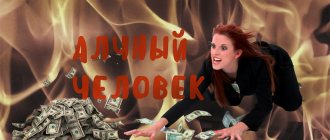In modern society, where a tense atmosphere often reigns, a surge of joy and optimism is considered to be a rare, but quite favorable phenomenon. However, experts in the field of psychotherapy do not think so, because in their opinion, a sharp change in the emotional mood in a positive direction for no apparent reason is due to unfavorable changes in the human brain. Therefore, it is worth delving into the topic in more detail and understanding whether euphoria is a blessing or a state that acts as a harbinger of bad events in the work of certain body systems.
Euphoria - what does it mean?
The term "euphoria" comes from the Greek word "euphoria", which translates as "state of pleasure". This is a spontaneous and pronounced emotional uplift, accompanied by causeless fun, joy, a feeling of happiness and optimism for no good reason.
The cause of euphoria is a biochemical reaction in the brain. Endorphin connects with the receptors of nerve cells, and dopamine transmits impulses through the processes of these cells that cause pleasant sensations. When the amount of these hormones increases, this reaction increases several times and causes euphoria.
Important! Euphoria gives the patient only pleasant sensations, but a prolonged feeling of delight and happiness is considered unhealthy and dangerous for a person.
General concept
An attack of euphoria: what is it? Novice psychologists are often interested in this question.
Euphoria is a feeling of a sudden emotional shock, good mood, an explosion of positive emotions, causeless happiness. It makes people more courageous, gives them self-confidence, and increases adrenaline in the blood. Elevated mood, as a rule, does not last long. It is usually accompanied by lethargy, confusion, and loss of critical thinking. Euphoria often acts as a trigger for starting any activity. It helps to make decisions on issues that have been ignored for a long time, to make important decisions.
Euphoria: what does this feeling mean from the physiological point of view is a question for many people. From a physiological point of view, such mood elevations are the result of a sharp increase in the level of four hormones: endorphin, serotonin, oxytocin and dopamine. The degree of elevated mood and happy inspiration of a person depends on their concentration.
Important!
The highest stage of euphoria is called ecstasy.
This condition is addictive. This leads to the person trying to recreate and provoke euphoria in order to feel ecstasy again. Normally, people rarely feel causeless happiness, since this state is very energy-consuming for a healthy person.
With psychological and physical abnormalities, people may experience euphoria much more often. At the same time, it will be replaced by a state of apathy, depression, and moral exhaustion. With frequent mood changes and a regular feeling of happiness turning into ecstasy, a person needs to radically take care of his lifestyle: restore his psycho-emotional state, add moderate physical activity, and do what he loves.
EUPHORIA
What causes euphoria?
A euphoric state can arise as a result of three groups of reasons:
- naturally, as a result of normal causes;
- in a toxic manner, through the use of drugs and alcohol;
- psychologically and physiologically, in diseases and injuries.
Natural causes
Elevated mood in this case manifests itself for normal reasons natural to humans.
This group includes:
- euphoria of love or euphoria of passion;
- delight in music or film soundtracks;
- happiness when receiving good news;
- feeling of pleasure after playing sports.
Love euphoria, which occurs when falling in love, is considered the most common subspecies in this group. Unlike pathological types, it does not last long: a euphoric state occurs often, but quickly fades away and gives way to other emotions.
Toxic causes
A euphoric state can be obtained through the abuse of alcoholic beverages and psychotropic drugs.
This subgroup includes the following types of euphoria:
- alcoholic, accompanied by mental retardation;
- opium, which does not affect the speed of thought processes;
- heroin, characterized by sharp changes from euphoria to melancholy.
When toxins leave the body, the state of toxic euphoria also disappears. The desire to regain a sense of joy and serenity often leads people to drug addiction and alcoholism.
Mental and physiological reasons
Physiological and mental reasons that provoke a euphoric state include the following pathologies:
- skull injuries, especially with damage to the frontal lobes of the brain;
- oligophrenia;
- clinical depression;
- affective disorders;
- manic syndrome;
- hyperthymic psychopathy;
- affective insanity.
Getting rid of such conditions is carried out by doctors of psychotherapeutic and neurological profiles.
Emotional disorders (continued)
Quantitative emotion disorders
As already indicated, normally the emotional background in children is somewhat elevated. This makes it difficult to detect hyperthymia in them. An indicator of a pathologically elevated mood is its lack of motivation, pointlessness, and disturbances in the child’s adaptation, associated primarily with altered behavior.
Hyperthymia includes: euphoria, hypomanic and manic states, exaltation, pathological ecstasy, moria.
Euphoria (Greek euphoria: eu - good, right; phero - to endure) occurs quite often in children. It is characterized by elevated mood without significant reasons, complacency, carelessness, and lack of initiative. No acceleration of thinking or increased desire for activity is detected. Euphoria may be the first manifestation of the onset or exacerbation of a mental illness.
Euphoria occurs in children with organic brain damage, in particular with some forms of encephalopathy, mental retardation, sometimes with the onset of schizophrenia, and with some personality disorders. The occurrence of euphoria may be a consequence of the use of toxic or narcotic substances.
In young children, manifestations of euphoria may include aimless motor disinhibition, increased distractibility, sleep inversion, and a tendency to masturbate. Their euphoria can quickly give way to hypothymia.
In older preschoolers and younger schoolchildren, the appearance of euphoria is accompanied by a change in behavior pattern. The child develops fussiness, verbosity, and disobedience that were not previously noted in him, against the background of a cheerful, carefree mood. Children become sloppy, irresponsible, forget about their responsibilities and assignments given to them, which can be incorrectly regarded as memory impairment. Their performance and performance decline. With organic brain damage, the euphoria of children is not only not combined with acceleration of thinking, but can be accompanied by perseverations, that is, patients getting stuck on any one thought with a monotonous repetition of it or with an annoying repetition of the same question.
Euphoria in prepubertal and pubertal children, in addition to an elevated, carefree mood, manifests itself in increased motor activity, boastfulness, unceremoniousness, and a lack of a sense of distance in relation to adults.
Euphoria can be the leading symptom of the hyperthymic type of character accentuation. Such teenagers consider themselves sociable, friendly and open, and have high self-esteem. They note a prevailing elevated mood, a light attitude towards life's adversities. As their own shortcomings they cite restlessness, impatience, and lack of commitment.
In many ways, it is euphoria that determines the clinical picture of such types of constitutional psychopathy and psychopathic development in adolescents as hyperthymic-unstable, hyperthymic-hysterical, hyperthymic-explosive.
Hyperthymic-unstable teenagers are distinguished by optimism, a penchant for adventurism, and a desire for leadership. Hedonic motivation for voluntary activity often leads to a constant thirst for entertainment, skimping on schoolwork, alcoholism, sexual excesses, and, as a result, conflicts with parents and teachers. The hyperthymic-unstable type is the most common.
The hyperthymic-hysterical type shows a tendency to fantasies, boasting, and demonstrativeness. The strength of attachment to others is determined by recognition or non-recognition of primacy. Euphoria is the main background of mood in these adolescents, which does not disappear even when they demonstrate negative emotions, for example, during suicidal blackmail.
The hyperthymic-explosive type is characterized by the appearance of euphoria after affective outbursts of irritation and aggression. After a violently experienced negative emotion, the world again seems benevolent and makes such teenagers happy. They easily forgive real and imaginary offenses and maintain good relations with those who were recently considered “enemies.” Traumatic brain injuries play a large role in the formation of this type of psychopathy.
In order to cause euphoria, children and adolescents use volatile toxic organic substances (Moment glue, solvents, stain removers, nitro paints, etc.). In this case, polymorphic mental disorders also occur, but the leading symptom is euphoria.
Drinking alcohol is the most common way to induce euphoria. A state of euphoria, reminiscent of alcohol intoxication, appears in the first stage when smoking hashish (marijuana, anasha, plana, gonsha, banga, haras, etc.), followed by inhibition. Drug intoxication with codeine also has an external resemblance to alcohol intoxication and occurs in waves. The use of opium, its alkaloids, morphine, and heroin initially gives a sedative effect, and then introduces a state of “nirvana” that lasts up to four hours and is characterized by euphoria. When barbiturates are abused, euphoria occurs only in the initial stages of the disease, later giving way to unstable mood, irritability, and lethargy. Taking benzodiazepines also leads to euphoria in the later stages of anesthesia, followed by dysphoria. The first phase of intoxication, the overdose cycle, is characterized by euphoria, reminiscent of alcohol, lasting 20-30 minutes. When taking ephedrone for the first time, acute drug intoxication, manifested in euphoria and sexual arousal, lasts about 7-8 hours. Amphetamines, cocaine, and chifir cause euphoria. Thus, euphoria is an important symptom in many forms of chemical dependence in children and adolescents.
emotional disorders – previous | next – emotional disorders (continued)
Content. E. G. Eidmiller. Child Psychiatry
Symptoms of a state of euphoria
Euphoric states are accompanied by characteristic symptoms:
- causeless feeling of pleasure, joy and happiness;
- serenity, carelessness, excessive optimism;
- decrease in intellectual functions;
- active but unproductive activity;
- increased gesticulation, waving of arms;
- rapid, unintelligible and verbose speech;
- imaginative fantasies without trying to realize them;
- increased heart rate, increased blood pressure.
The main symptom is the patient’s feeling of satisfaction and serenity for a long time, for no apparent reason. Other signs may appear differently among patients, or may be absent altogether.
Survey
Euphoria is a bright, emotionally expressed state. If it is caused by natural factors, no special diagnosis is required; the person experiences short-term inspiration and excitement, and then his mood becomes normal. You should consult a doctor when unmotivated joy persists for a long time, is replaced by anger and depression, and is accompanied by disinhibited behavior. Patients with such symptoms are examined by psychiatrists, narcologists, and neurologists. Diagnostic methods used:
- Clinical conversation.
Typically, patients are not critical of their own condition. They describe their mood as cheerful and joyful, but do not attribute it to symptoms of illness or intoxication. Their speech is accelerated or slow, emotional, with an abundance of interjections and perseverative repetitions. The doctor receives reliable clinical information from the patient’s relatives. Signs of pathological euphoria are long duration, absence of situational causes, exhaustion of the body, manifested by depression and anger. - Observation.
Patients demonstrate an unreasonable feeling of contentment, carelessness, and serenity. The mood is high, but there is no increase in productive activity, verbosity is unfocused (fragmentary phrases), thinking is accelerated, but unstable. These features are manifested by the inability to maintain a conversation and plan behavior. Facial expressions reflect joy, gestures are extensive. - Psychodiagnostic tests.
In a state of euphoria compensation, special questionnaires and drawing tests can be used for diagnosis. The method of V.V. Boyko “Tendency to Euphoria” is used to identify hypomanic tendencies in the personality structure - SMIL. According to the drawing tests, the level of self-esteem, the presence of impulsiveness, and expansiveness of behavior are determined.
Psychodiagnostic techniques are used to examine patients
Why is euphoria dangerous?
Euphoria can greatly harm a person. An enthusiastic state observed over a long period of time impairs the functioning of self-control mechanisms. This leads to unbalanced behavior, uncontrollability, and hysteria. This behavior can be harmful to both the patient and people around him.
Other effects of euphoria include:
- dissociation of mental activity;
- social maladjustment;
- loss of sense of reality;
- toxic dementia.
The narcotic type of euphoria is often accompanied by euphoric pain: severe physical or psychological discomfort, which the patient talks about with pleasure and joy. This is a dangerous condition that can cause serious injury.
Important! In some cases, euphoria can be fatal.
Symptoms of taking Ecstasy
Changes in human behavior are visually visible; the chemical begins to act 20 minutes after administration. The effect lasts up to 8 hours. During this period of time, the addict experiences strange sensations and sometimes falls out of reality. After the appointment, the person is joyful, with a burning desire to communicate, talk, talk at length on abstract topics, and get active.
Relatives, in addition to the excessively active behavior of their loved one, should be wary of external manifestations of addiction:
- dilated pupils;
- grinding of teeth;
- grimaces;
- jaw trembling;
- increased body temperature;
- tremor of the limbs;
- heart rhythm disturbance;
- dry skin;
- insomnia;
- excitation.
In some cases, the drug has an unpredictable effect. The person experiences panic and visual and auditory hallucinations appear.
After the excitement from taking drugs and the loss of its influence on a person, a feeling of fatigue, emptiness, and depression comes to replace it. A person is irritated, he feels that he is missing something, and strives for loneliness.
Treatment methods
Pathological forms of a euphoric state are usually treated with medications, droppers and psychotherapeutic techniques.
Drug treatment
Treatment of the euphoric state is carried out with the help of tranquilizers, vascular drugs, and antidepressants.
| Drug groups | Influence on aggressive behavior | Examples of funds |
| Normotimics | They relieve sudden mood swings and smooth out the transitions from euphoria to depressive states. Used as symptomatic therapy. | Valpromide, Carbamazelide |
| Tranquilizers | Relaxes and calms, relieves unbalanced behavior. Used for mental forms of euphoria. | Hydroxyzine, Phenazepam |
| Antipsychotic drugs | They are used for mental illnesses that cause a feeling of excessive joy, pleasure and happiness. | Haloperidol, Quetiapine, Clozapine |
| Sedatives with natural ingredients | They relax and calm the nervous system, allowing you to cope with pathological causeless joy. Reduce the symptoms of a euphoric state, relieve hysteria and imbalance. | Persen, Novo-passit, |
| Sedatives with alcohol | Valosedan, Corvalol | |
| Bromine-based sedatives | Adonis Brom, Bromcamphora | |
| Other sedatives | Magnesia, Afobazole | |
| Nootropics | Stimulate blood circulation, improve intellectual abilities and memory. Used for head injuries or problems with blood supply to the brain. | Picamilon, Nootropil, Phenibut |
| Antidepressants | Increases the amount of neurotransmitters in the brain. They help overcome depression, which causes unmotivated delight. | Melipramine, Trizadone, Fluoxetine |
| Diuretics | Cause forced diuresis, help get rid of the euphoric state caused by toxic causes | Diakarb, Trigrim |
| B vitamins | They improve the functioning of the nervous system, help cope with unstable conditions, and smooth out the symptoms of euphoria. | Angiovit, Compligam B, Pentovit |
IV
Important! In case of toxic poisoning caused by abuse of alcoholic beverages or drugs, blood purification using a dropper is used.
Under the supervision of a nurse or doctor, the patient is given a mixture of glucose and saline over 30-120 minutes. Once the toxins leave the body, the euphoric state caused by them will also disappear.
Psychotherapy
Psychotherapeutic techniques are used to correct mental causes that cause causeless contentment, as well as for alcohol and drug addiction.
The most popular methods are:
- art therapy with the creation of drawings and crafts;
- play therapy with the performance of certain roles;
- group sessions with other patients;
- family therapy to solve intrafamily problems;
- individual consultations and conversations with a doctor.
To achieve a pronounced effect, psychotherapists combine these methods.
Euphoria is a positive and pleasant feeling that often indicates pathological conditions. You can cope with it with the help of antidepressants, nootropic and sedatives, psychotherapeutic methods or IVs.
Composition of the drug
The drug contains LSD, caffeine, and other impurities. The latter have a detrimental effect on the human body and show a high degree of neurotoxicity.
The drug looks attractive. Its manufacturers are not lazy and produce doping in tablet form. Often the dragees look interesting and colorful. For example, a harmful substance is sold under the guise of hearts of various bright colors. The price of the tablet is affordable for young people who take the drug in nightclubs, discos and other entertainment venues.
The action of Ecstasy is unpredictable: this is the danger of the drug. After taking it, a person may experience:
- joy, euphoria, uplifting mood;
- cheerfulness, self-confidence;
- panic attacks;
- disturbance of perception of surrounding reality.
Senses are heightened, the addict may not sleep for a long time, and may not feel hungry. I want to repeat the feelings of joy and happiness that the pill gives me again. This is how tolerance to the chemical substance and harmful dependence are formed.









